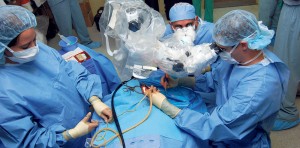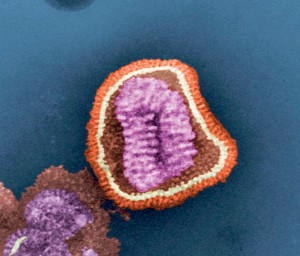SUNDAY, 7 NOVEMBER 2010
Meaning in motionsThe duo used an approach they dubbed ‘goal-outcome matching’. It focused around the apparent aims of the gesturer (considering context, visual attention and social status) and whether or not the reaction of the recipient satisfied these aims. Where the two matched consistently, a meaning was attributed to the signal.

Twenty-eight orangutans from three European zoos in the UK, Netherlands and Jersey were video recorded over a period of three months. After studying the footage, researchers were able to identify 64 gestures, 40 of which were used consistently enough to determine a meaning.
This dictionary is a milestone in the continuing move towards a more cognitive approach to non-human communication. Although studies of non-verbal language have been carried out before, particularly in great apes, this is the first to emphasise specific, intentional meanings of observable gestures. The study also hints at relative universality in the orangutan’s language, with the authors arguing that “an orangutan in Singapore gestures in pretty much the same way as an orangutan... in Philadelphia or Wales.” Taylor Burns
Filling in the gaps
The formations of seromas – ‘dead spaces’ within the body – can be a painful and dangerous consequence of surgery, often occurring after extensive tissue removal. These spaces can fill with fluid and form what are essentially internal blisters; in the worst cases an additional operation is required to remove them. Researchers at Cornell University have reported a novel solution to this problem, in which they use an injectable, biodegradable polymer to fill in the empty space.
The standard treatment for seromas is to insert drains and remove the fluid. However, this can cause pain and discomfort, particularly upon removal from the body. Other techniques, such as surgical collapse of the seroma, are often not effective. Utilising a synthetic biomaterial to simply fill the cavity provides a safe, efficient, and cheap alternative to current treatments.

David Putnam and his team have developed an MPEG-pDHA-based hydrogel with easily adjustable physiochemical properties. Crucially, the polymer is ‘thixotropic’ and behaves as a ‘non-Newtonian’ fluid: solid in its natural state, but when subjected to stress or agitation it develops liquid properties, allowing it to be easily injected into the body. Once it has filled the seroma, it re-solidifies, preventing liquid from entering. Testing was carried out on rats and has yielded promising results. The biomaterial was seen to be highly compatible with surrounding tissue and effectively prevented the formation of seromas. It was also shown to degrade into non-toxic components. Nicholas Gibbons
Making good use of viruses

A group of international researchers at Radboud University in The Netherlands have found a way to use viruses as delivery vehicles for drugs, growth factors, and even metallic particles. To do this, they removed all the harmful components of the virus, leaving just the empty permeable viral packaging behind. They were then able to fill the packaging with their desired molecule and join the viral particles together using positively charged polymers. These long, branched chains of molecules can bind to the negatively charged viral particles at multiple locations. However, the binding is so strong that separating the particles again – in order to allow them to release their contents – poses a challenge. The researchers solved this problem by using polymers that were light sensitive – high frequency or ultraviolet light can be used to break apart the polymers. After injecting the polymer-virus complexes into the body, focusing a light source on the area where you want the contents delivered should allow for a highly controlled and localised release. Ayesha Sengupta
Check out www.bluesci.co.uk, or BlueSci on Twitter http://twitter.com/BlueSci for regular science news updates
